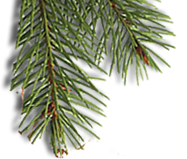Nomadic Culture - Black Elk

The Crow and Cheyenne nations were documented as living here more than 200 years ago. The Pawnee and Shoshone often frequented the area. The Lakota Sioux, the most recent of the Native American nations, moved into the area around 1780 pushing the Crow and Cheyenne south and west. The Sioux had been forced from their native home in the Minnesota region by the Chippewa, who in turn, had moved into Minnesota from the East. All of this migration was the result of the westward expansion of American civilization.
Black Elk Speaks in Spearfish Canyon
In the tradition of the Plains Natives, to know one's ancestry was through the 'spoken' word. Rarely, if at all, was it in written form. Some Native American history was recorded by the author, John G. Neihardt, who in 1932 wrote the book, Black Elk Speaks.
In 1930, as the nation was roaring into a new form of industrialism, a Nebraska poet named Neihardt traveled northward to the reservation of the Oglala Sioux in search of historical material. John G. Neihardt was also a frequent traveler to Spearfish Canyon, and resided in one of the quaint cabins of the old Latchstring Inn. There, for months on end, the charm and solitude of the enchanting Canyon landscape inspired his many writings including the words of Black Elk.
His own words best describe his visit to the reservation.
"It was during August, 1930, that I first met Black Elk. I was then working on the Song of the Messiah...called the "Messiah craze" -- the great Messiah dream that came to the desperate Indians in the middle of the 80's of the 19th century and ended with the massacre at Wounded Knee, South Dakota."
Black Elk was a 'wichasha wakon,' a holy man, and was the second cousin to Crazy Horse and had known the great chieftain well. Black Elk offered an eloquent and profound vision of the unity of all life.
The Pipe:
"I will first make an offering and send a voice to the Spirit of the World, that it may help me to be true. See, I fill this sacred pipe with the bark of the red willow; but before we smoke it, you must see how it is made and what it means. These four ribbons hanging here on the stem (of the pipe) are the four quarters of the universe. The black one is for the west where the thunder beings live to send us rain; the White one for the north, whence comes the great white cleansing wind; the red one for the east, whence springs the light and where the morning star lives to give men wisdom; the yellow for the south, whence come the summer and the power to grow. But these four spirits are only one spirit after all, and this eagle feather here (on the stem) is for that One, which is like a father, and also is for the thoughts of men that should rise high as eagles do. Is not the sky a father and the earth a mother, and are not all living things with feet or wings or roots their children?"
The Wasichus:
 Black Elk speaks of a time in history when the Wasichus, a term to designate the white man, but having no to his color of skin, had encircled the Black Hills with their iron roads (railroads) that had cut the bison herd in two, and the muddy trails full of wagons and longhorns passing ever westward. But, then -- they stopped. Black Elk speaks of a time in history when the Wasichus, a term to designate the white man, but having no to his color of skin, had encircled the Black Hills with their iron roads (railroads) that had cut the bison herd in two, and the muddy trails full of wagons and longhorns passing ever westward. But, then -- they stopped.
"Pahuska (long hair – General Armstrong Custer) had led his soldiers into the Black Hills to see what he could find. He had no right to go there...they had made a treaty in 1868 that said the Hills are ours as long as the grass should grow and water flow. It was such a good place to play and the people were always happy in that country. Pahuska had found much of the yellow metal that makes the Wasichus crazy. We had known of the yellow metal chunks, but it was not good for anything."
The rest is history.
Black Elk shared his vision with Neihardt because he wished to pass along to future generation some of the reality of Oglala life and the visions of its future. Black Elk Speaks, originally published in 1932, is venerated by many who have become alarmed at the declining spiritual and material quality of life in the modern age. So important has the book become, that it is recognized as the Holy Book of the North American native cultures.
Contributors/Source: Black Elk Speaks by John G. Neihardt, University of Nebraska Press. |


